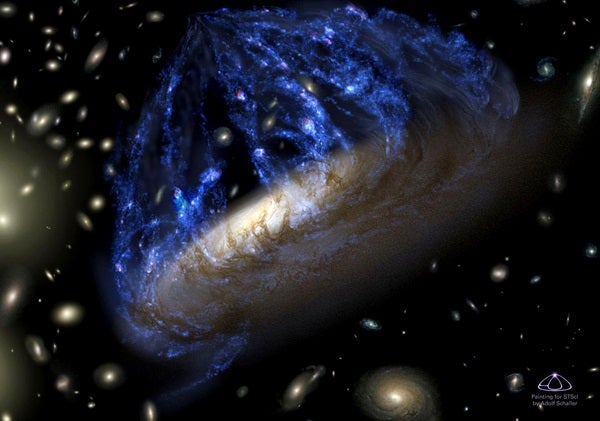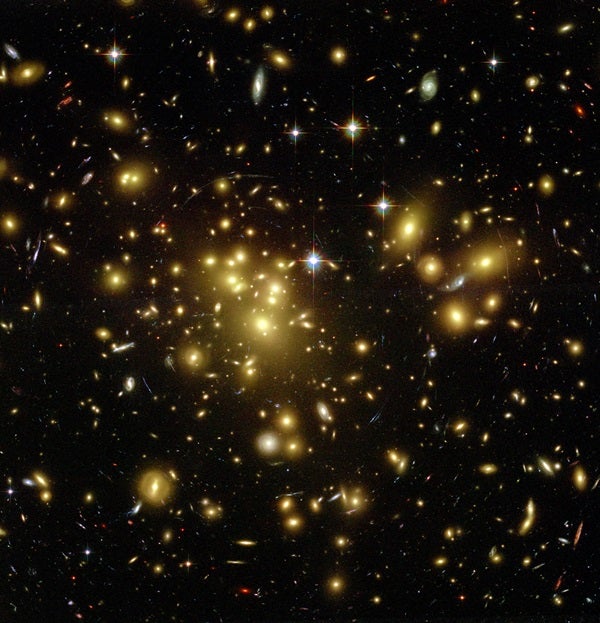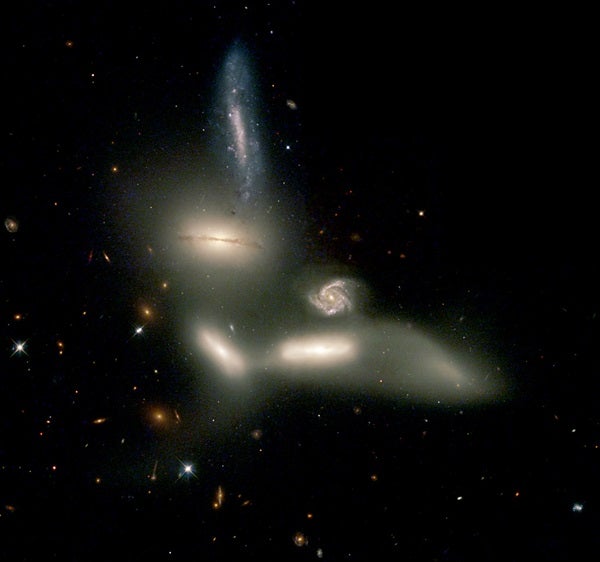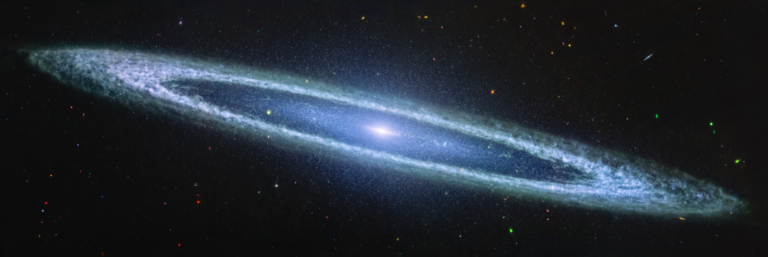The centers of rich clusters of galaxies contain the densest concentrations of matter in the universe. They’re also among the most violent places we know of. As time rolls on and large galaxies swarm around meeker ones, mergers take place. Big galaxies grow larger by eating small ones. As this happens, worlds are torn apart, stars shredded, and gas clouds compressed into reckless new throes of star formation. We live in a relatively quiet corner of the Milky Way Galaxy. By contrast, the centers of rich galaxy clusters are the universe’s most chaotic locations, constantly bustling with activity.
Until recently, astronomers thought they understood how galaxy clusters form. As matter collapses inward, pulled by gravity, groups of galaxies and clumps of matter crush together. The monsters of the scene, the big galaxies, fall toward the center, where the most mass resides.

Bringing the universe to your door. We’re excited to announce Astronomy magazine’s new Space and Beyond subscription box – a quarterly adventure, curated with an astronomy-themed collection in every box. Learn More >>.
Hot gas in the cluster core loses energy and cools by emitting X-rays. As the gas inside the cluster cools, it also contracts. Astronomers dubbed this contracting gas a cooling flow. Up until 2006, the idea had been gospel since first proposed in 1977.
Galaxy clusters have thrown astronomers a few surprises. One of the theorists who came up with the cooling-flow model, Paul Nulsen of the Harvard-Smithsonian Center for Astrophysics, says, “We now think it’s almost completely wrong.” Researchers are now focusing on a model where more complex flows drive the formation and evolution of galaxy clusters.
But gas cooling remains an important feature of the latest models. The trouble is, astronomers just don’t know what’s heating the gas. X-ray observations suggest that a vast amount of cool gas should be produced in the cores of galaxy clusters each year. This should lead to massive episodes of star formation. “But when we measured rates of star formation,” says Brian McNamara of Ohio State University, “we were getting 10 to 20 solar masses a year or less.”
So what could be hiding in the cool gas? Near the turn of the century, McNamara uncovered a clue in the distant galaxy cluster Hydra A, some 840 million light-years away. Using NASA’s Chandra X-ray Observatory, he showed that powerful jets heated the surrounding gas to tens of millions of degrees.
So, it appears the mysterious heat source inside galaxy clusters are jets from active galaxies powered by supermassive black holes. But the mystery lingers — jet luminosities don’t exactly match the clusters’ X-ray cooling rates. So, while the whole picture of galaxy-cluster heating and cooling is becoming clearer, it’s a long way from being solved.
What astronomers do know is that massive galaxy clusters remain among the cosmos’ most energetic spots.












